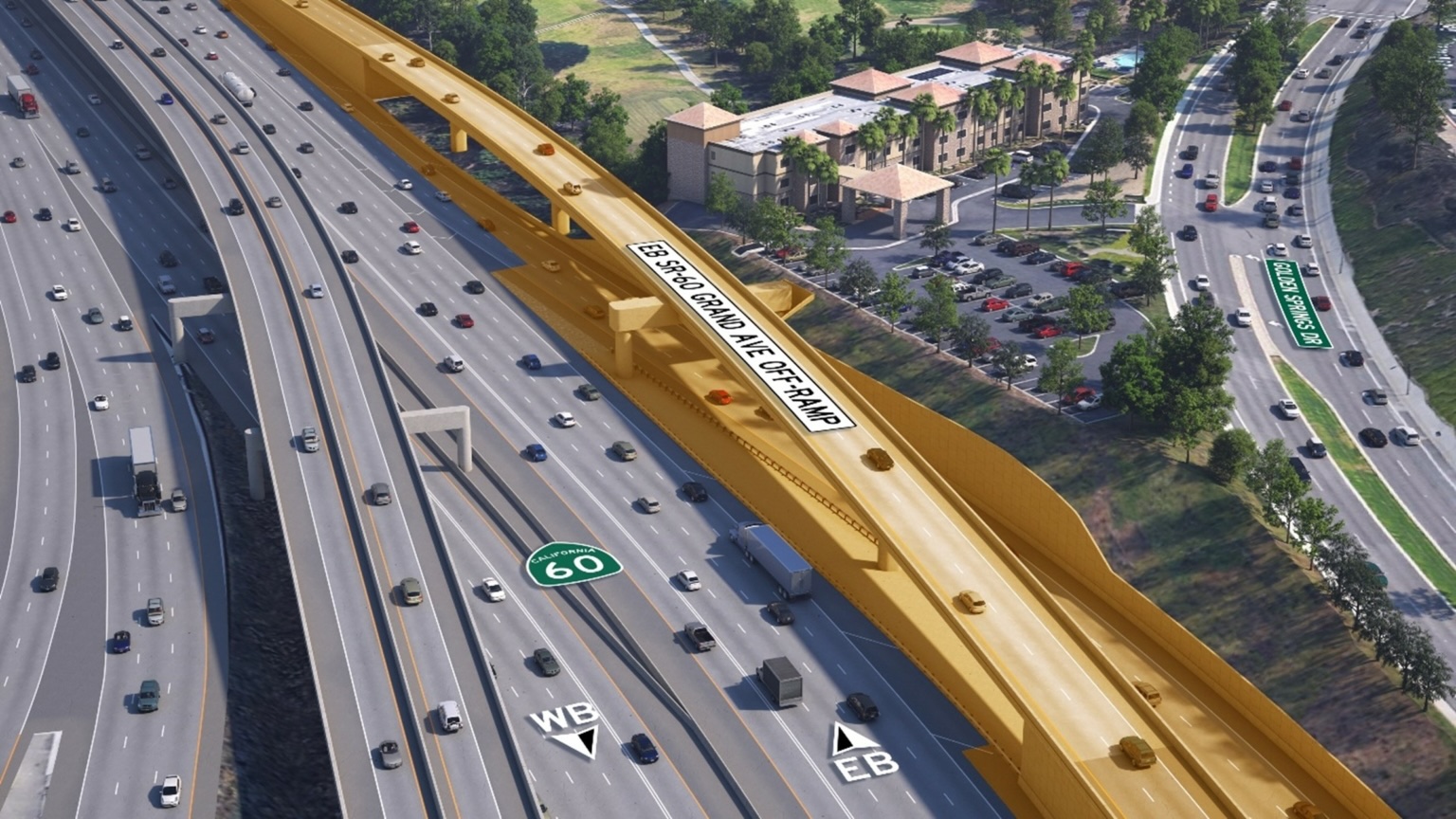Have a story idea
Have a story idea? Send it to us here.

Source : Southwest Concrete Pavement Association
December 9, 2024
Author : Patty Allen
The $444+ million SR 57/60 Confluence Chokepoint Relief Project, jointly managed by Metro and Caltrans, is steadily taking shape after breaking ground in mid-2023.
Located in Diamond Bar and the City of Industry, the project’s goal is to reduce congestion and improve safety along the busy stretch where the 57 and 60 Freeways converge.
This area, often cited as the seventh worst trucking bottleneck in the nation, sees around 100 million vehicles passing through annually.
The project, which began planning in 2011, is expected to be completed by 2028.
A key feature of the project is its focus on improving the chronic congestion and accidents that occur due to the narrow terrain and complex weave zones, particularly in the stretch between the San Gabriel and Chino Hills. The current phase, focusing on the eastbound 60 and northbound 57 interchange, is set to create smoother traffic flow, particularly at Grand Avenue, a known bottleneck.
The project will also bring significant improvements to surrounding infrastructure, including the Grand Avenue Bridge, flyover ramps, and on-ramps.
The project’s most notable components include:
Further, construction crews are installing retaining and sound walls throughout the area, and utility relocations continue as part of the overall upgrades. This expansion’s goal is to add more than eight miles of driving lanes, widen the Grand Avenue Bridge, and provide a safer and more efficient route for drivers.
Despite these improvements, the project is not without controversy. Critics argue that while the expansion will increase capacity, it may not eliminate traffic congestion and could lead to even worse conditions in the long run due to induced demand- a phenomenon where adding lanes leads to more cars on the road. Moreover, the expansion does not address the area’s lack of public transportation infrastructure or integrate any bike lanes.
The project is partially funded by Metro’s Measure M sales tax and the state’s Trade Corridors Enhancement Program, with the total cost coming in at $444 million. However, the added lanes and infrastructure improvements are unlikely to resolve all of the said challenges.
Still, Metro and Caltrans maintain that it will significantly improve traffic flow and reduce accidents, particularly for drivers using Grand Avenue to access the 57 or 60 Freeways.
The project remains a critical undertaking for the region, with construction continuing until 2028.
For now, drivers passing through this junction can expect some short-term inconveniences, but the long-term benefits- particularly for goods movement- are hoped to outweigh the disruptions.
Category : Investment in Infrastructure State Government Freeways and Highways
